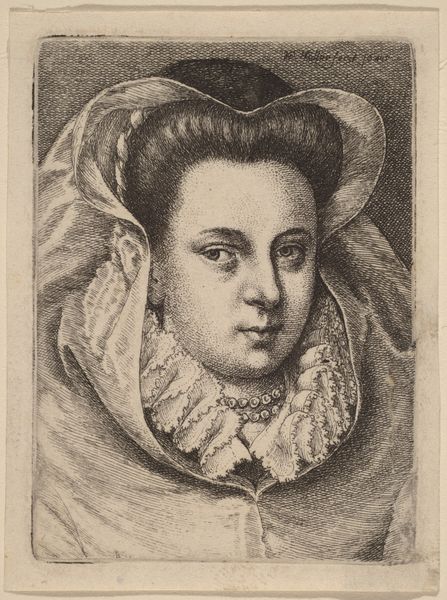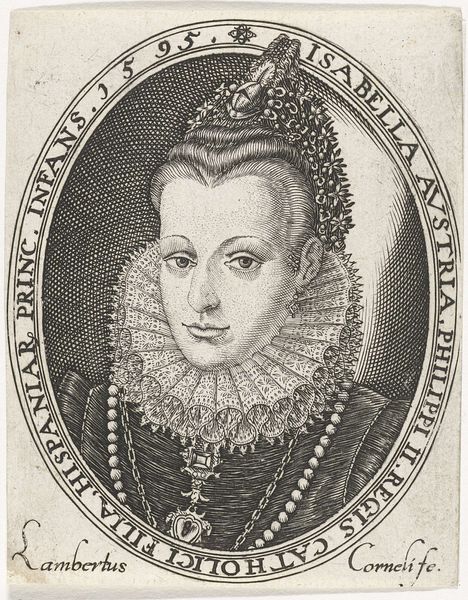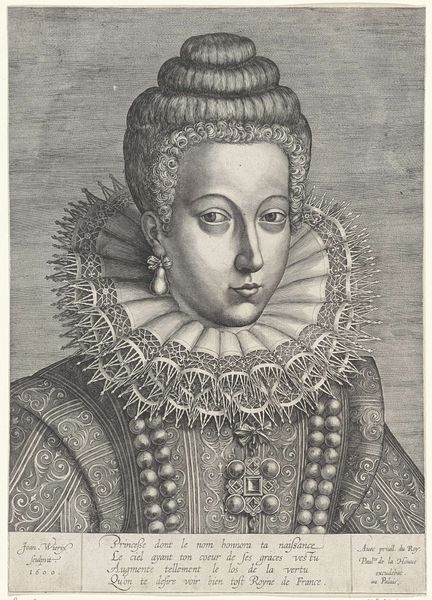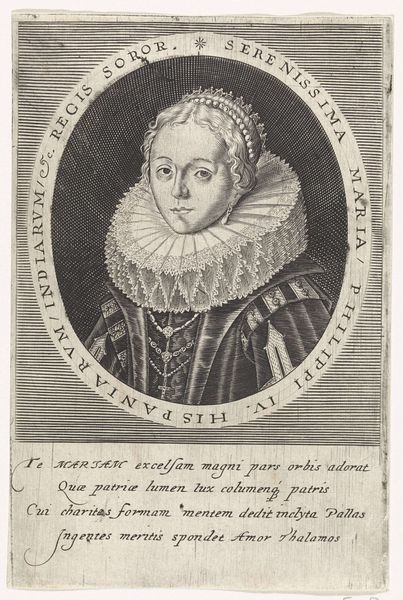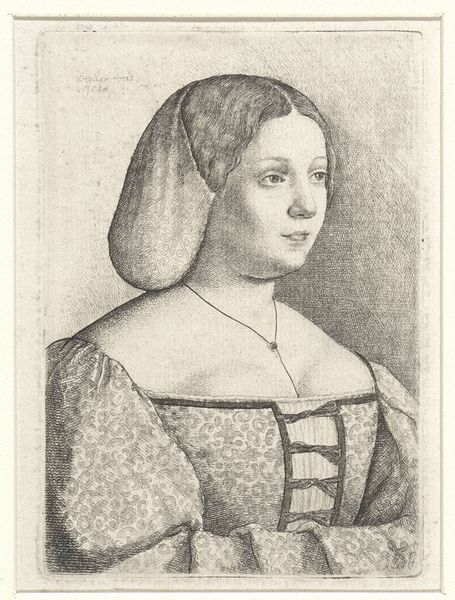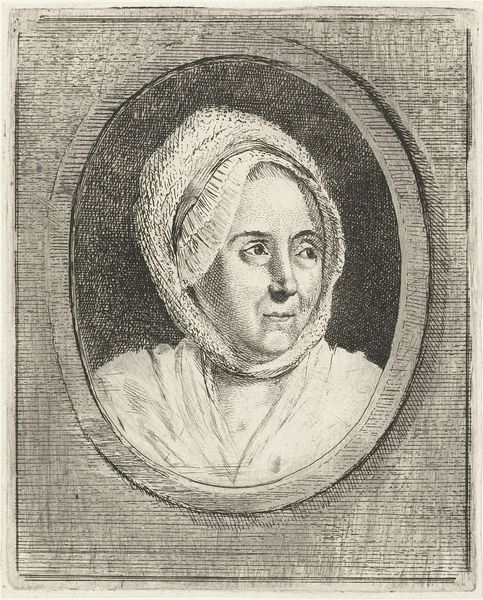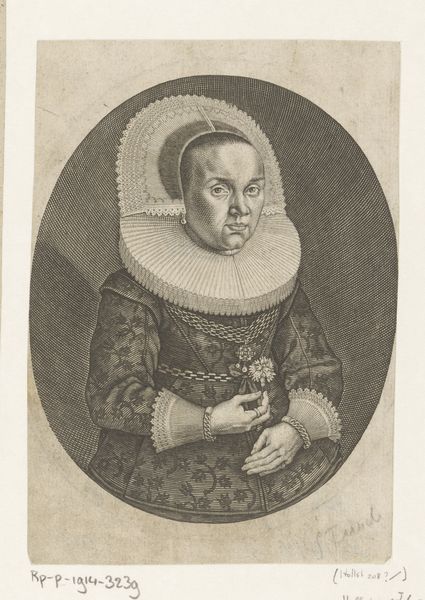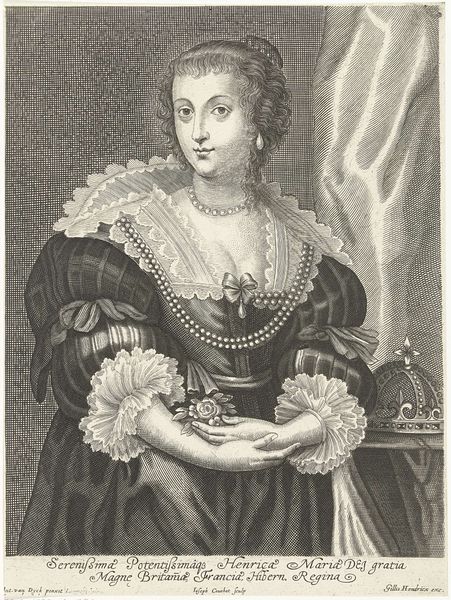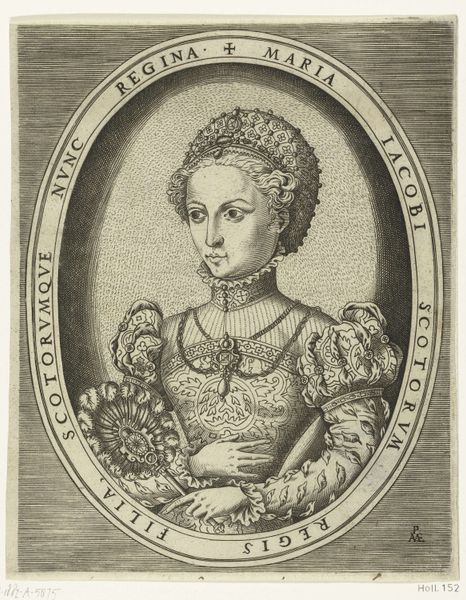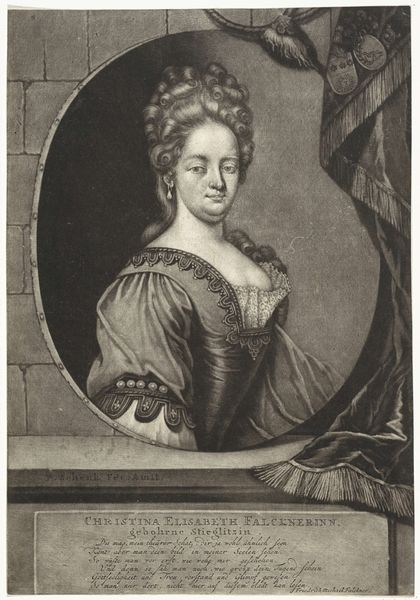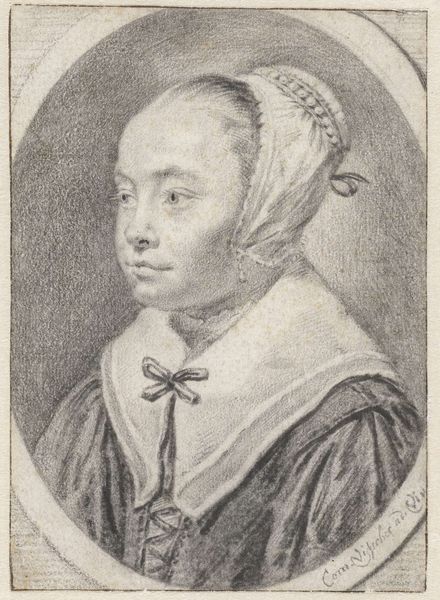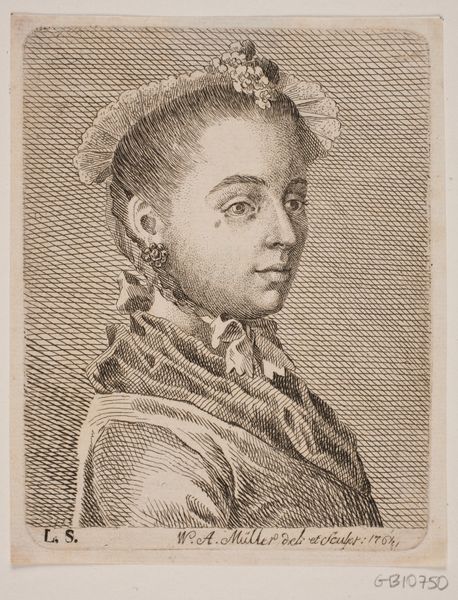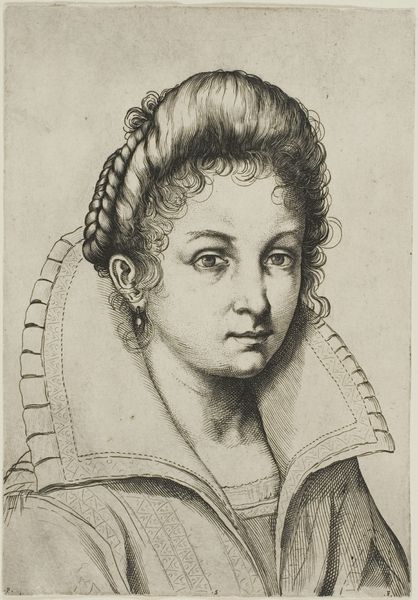
print, engraving
#
portrait
#
baroque
# print
#
engraving
#
realism
Dimensions: height 69 mm, width 50 mm
Copyright: Rijks Museum: Open Domain
Editor: This is "Portrait of a Woman with White Veil and Black Cap," an engraving made in 1645 by Wenceslaus Hollar, currently housed at the Rijksmuseum. I'm struck by the formality and somber mood. What symbols or hidden meanings do you think are embedded in this portrait? Curator: Look closely at the details: the white veil, the black cap. In the 17th century, these weren't simply fashion statements. Consider the contrasting colors. White often symbolized purity, innocence, and light, while black was associated with mourning, seriousness, and authority. The veil itself acts as both a covering and a revealer, doesn't it? Editor: So, the combination of white and black suggests a tension between those ideas? Curator: Precisely! Think about the social context. The sitter’s dress may point to a certain societal role – perhaps she is a widow or a woman of significant social standing. What does her face tell you? Editor: Her gaze is direct, but there's a certain sadness in her eyes. She seems self-assured, but perhaps also burdened. Curator: Yes, Hollar was a master of capturing psychological complexity within formal portraiture. He presents a cultural type as well as an individual. Do you see any other symbols in the composition? Editor: Well, she wears a pearl necklace. Pearls often signify wealth, but also tears… Curator: Indeed. Everything within the frame carries meaning. Hollar carefully layers these signifiers to give us access to a richer narrative beyond simple representation. And the act of memorialization that images perform across centuries – quite powerful, isn’t it? Editor: Definitely. I never considered how much emotional and cultural weight a portrait like this could carry!
Comments
No comments
Be the first to comment and join the conversation on the ultimate creative platform.
